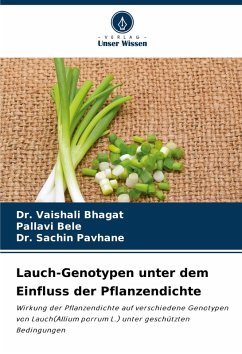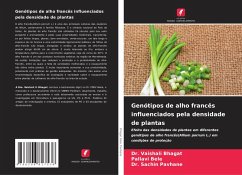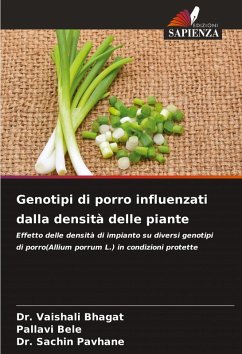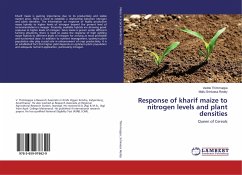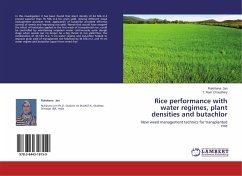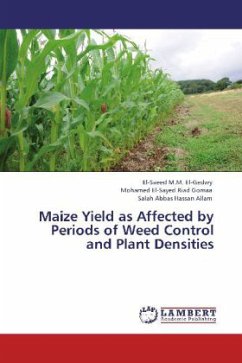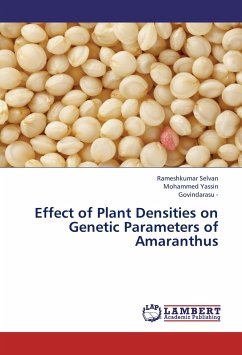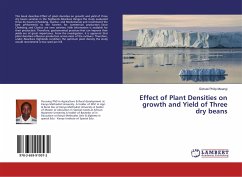
Leek genotypes influenced by plant densities
Effect of Plant Densities on Different Genotype of Leek (Allium porrum L.) Under Protected Condition
Versandkostenfrei!
Versandfertig in 6-10 Tagen
45,99 €
inkl. MwSt.

PAYBACK Punkte
23 °P sammeln!
Leek (Allium porrum L.) is a major crop among Allium species belongs to the family Alliaceae. it is national symbol of Wales. Leek plants have been employed for centuries for the pungency and flavouring value and for their medicinal properties. It is characterized by broad, flat, tightly wrapped, dark green leaves, a long, thick white stalk and a slightly bulbous end. Leek leaves are broad, elongated and green; leek plants can grow up to 60-90 cm (2-3 feet) tall. It is very tolerant to cold weather, although the optimum temperature for vegetative growth is around 20°C. Leek is one of the exot...
Leek (Allium porrum L.) is a major crop among Allium species belongs to the family Alliaceae. it is national symbol of Wales. Leek plants have been employed for centuries for the pungency and flavouring value and for their medicinal properties. It is characterized by broad, flat, tightly wrapped, dark green leaves, a long, thick white stalk and a slightly bulbous end. Leek leaves are broad, elongated and green; leek plants can grow up to 60-90 cm (2-3 feet) tall. It is very tolerant to cold weather, although the optimum temperature for vegetative growth is around 20°C. Leek is one of the exotic vegetables in the Marathwada region. There are many constraints that reduce leek production and productivity among which lack of improved varieties and non-optimum plant spacing. It is very important to increase its productivity along with appropriate management practices. However, there is no location and variety specific recommendation on the plant spacing of leek cultivars in study area.





